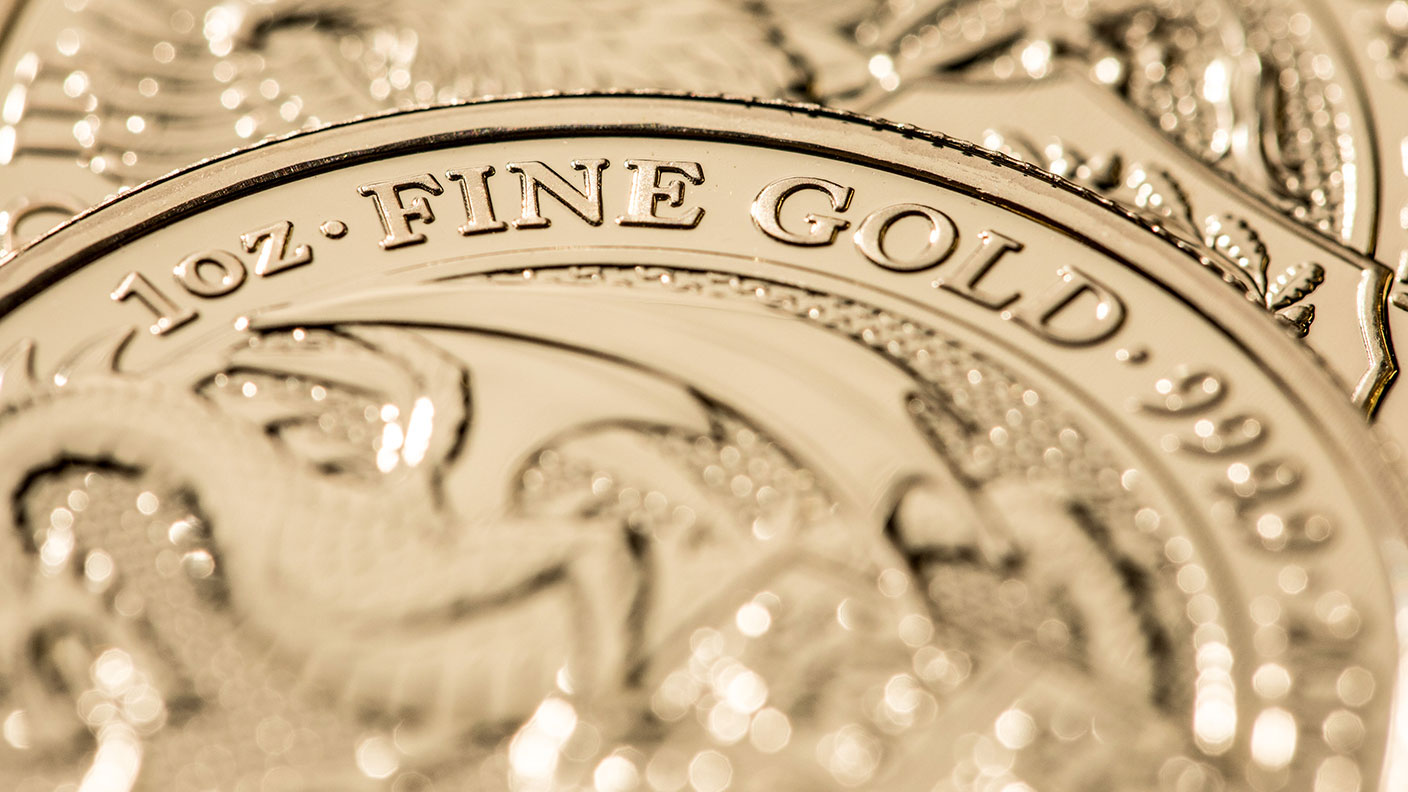Investing in gold ETCs - how to add gold to your portfolio
Investing in gold via exchange-traded commodities is simpler and cheaper than buying bars and coins


Looking to invest in gold? David Stevenson looks at how you can add it to your portfolio using ETCs over gold bars and coins.
Investors always look for parallel eras in past markets and a favourite idea at the moment is that we are doomed to repeat the 1970s. Some argue that this will mean a new star rises again in the investment firmament: gold, which started 1970 at $41 an ounce and finished the decade at $459.
Many people – me included – are skeptical about the case for these kinds of arguments about outsized gains. But there is a more reasonable claim that gold could still be a safe-haven asset in these uncertain times.
MoneyWeek
Subscribe to MoneyWeek today and get your first six magazine issues absolutely FREE

Sign up to Money Morning
Don't miss the latest investment and personal finances news, market analysis, plus money-saving tips with our free twice-daily newsletter
Don't miss the latest investment and personal finances news, market analysis, plus money-saving tips with our free twice-daily newsletter
So how can you add it to a portfolio, if you are so inclined? You could buy physical gold via bars and coins, but these command a premium that can be as much as 8% of the value of the purchase.
However, there are more practical investment alternatives, such as gold-based security from one of the firms that issues exchange-traded funds (ETFs). The choice of these funds has increased in recent years, while annual total expense ratios (TERs) management fees have declined markedly – you are now looking at just a few basis points.
In addition, most of these gold exchange-traded commodities (ETCs) – the common name for ETFs that track commodities – are now physically backed, meaning that your ETC owns an allocated share of a physical stockpile of gold held somewhere in a secure vault.
Size and liquidity
The biggest gold ETC is iShares Physical Gold (LSE: SGLN for the sterling-quoted version, LSE: IGLN in dollars). This is the most liquid choice, but it’s a close-run thing with its big rival Invesco Physical Gold (LSE: SGLP for sterling, LSE: SGLD for dollars).
Both have a total expense ratio of 0.12% per annum. If you’re looking for the longest established, it’s Gold Bullion Securities (LSE: GBS), set up by ETF Securities in 2004 and now run by WisdomTree.
If you want storage in Switzerland – some investors fear that the US or UK governments might confiscate gold – the biggest fund is WisdomTree Swiss Gold (LSE: SGBX, LSE: SGBS).
The sterling and dollar versions of these funds are just priced in different currencies: the underlying exposure is exactly the same. Your choice will be dictated in part by liquidity and in part by whether your broker charges a foreign-exchange fee when buying London-listed ETFs quoted in dollars – some do, some don’t.
However, there are also currency-hedged gold trackers, where the choice makes a difference to returns. The biggest and cheapest is WisdomTree Physical Gold Daily Hedged (LSE: GBSP) I would warn that hedging out currency complicates the safehaven strategy, as it introduces extra complexity and extra cost.
Interesting alternatives
The HANetf Royal Mint Responsibly Sourced Physical Gold ETC (LSE: RMAP, LSE: RMAU) is also interesting, even though it’s a bit more expensive with a TER of 0.22%.
The Royal Mint connection allows you to swap your holdings into physical Royal Mint gold coins or bars (although there is an extra cost for this). In addition, you’re getting gold that is “responsibly sourced” – the Royal Mint carefully tracks its gold supply.
Finally, risk-takers could consider gold-mining equities. Ignore all my comments about safe havens here: this is for those who actively believe that gold is cheap and think we’ll see prices move consistently above $2,000.
If that happens – and it’s a very big if – then traditionally you would expect the share price of firms that mine gold to benefit disproportionately.
To use the technical jargon, these have a high beta to gold prices and thus are only for out and out bulls – these goldmining equities significantly underperform if gold prices weaken.
If this is your preferred strategy (you could look on it as a big inflation-hedge option), then the best bet is probably an exchange-traded fund called Van Eck Gold Miners ETF (LSE: GDGB, LSE: GDX).
Get the latest financial news, insights and expert analysis from our award-winning MoneyWeek team, to help you understand what really matters when it comes to your finances.

David Stevenson has been writing the Financial Times Adventurous Investor column for nearly 15 years and is also a regular columnist for Citywire.
He writes his own widely read Adventurous Investor SubStack newsletter at davidstevenson.substack.com
David has also had a successful career as a media entrepreneur setting up the big European fintech news and event outfit www.altfi.com as well as www.etfstream.com in the asset management space.
Before that, he was a founding partner in the Rocket Science Group, a successful corporate comms business.
David has also written a number of books on investing, funds, ETFs, and stock picking and is currently a non-executive director on a number of stockmarket-listed funds including Gresham House Energy Storage and the Aurora Investment Trust.
In what remains of his spare time he is a presiding justice on the Southampton magistrates bench.
-
 Why Trustpilot is a stock to watch for e-commerce exposure
Why Trustpilot is a stock to watch for e-commerce exposureTrustpilot has built a defensible position in one of the most critical areas of the internet: the infrastructure of trust, says Jamie Ward
-
 Tetragon Financial: An investment trust with stellar returns
Tetragon Financial: An investment trust with stellar returnsTetragon Financial has performed very well, but it won't appeal to most investors – there are clear reasons for the huge discount, says Rupert Hargreaves